The Best Dog Brush for Your Dog?
If you have a new best furry friend or you have decided to start tackling your dog's grooming needs at home, nothing can be quite as daunting as the wide array of dog brushes available.
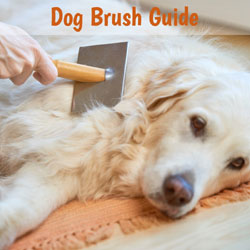
What is the purpose of every dog brush and what is best dog brush for each dog coat type? Which dog brush should you be using on your dog?
We will look at the main types of dog brushes, what each dog brush and comb does and what fur / coat type and issues each brush is useful for.
We will show you pictures of each type of dog brush so you know exactly what we are talking about each time. We will also take a look at which brush or comb to use for different dog coat types, by dog breed.
A dog brush is not a 'one type fits all' purchase. You will need to take your dogs particular fur into consideration, as each coat type has different needs. From pin head to slicker brush, let's sort them all out so you can decide which brush is best for your dog.
Slicker brush
These have quite tightly packed fine wire bristles and are good for dealing with tangles and knots in medium to long fur. They are also good at removing loose fur and getting down to undercoats so they are also useful for dogs with thick or wiry fur. This is also a great brush for double coated dogs. Slicker brushes are suitable for most coats except short haired dogs.
Be sure to use a slicker brush gently as they can be a little harsh. Don't apply too much pressure when using it as you may hurt your dog.
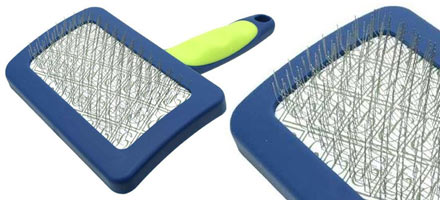
Pin brush
These brushes can be used to remove tangles and are gentler than the slicker but are not as good at removing loose fur. Pin brushes have wide spaced bristles with a protective ball on the end of each bristle so they are less harsh against the skin. Pin brushes are mostly useful for non-shedding dogs and dogs with curly or woolly fur or long, fine or silky fur.
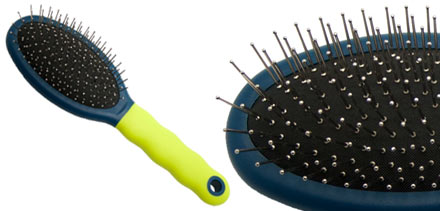
Bristle brush
Think of a bristle brush as a finishing brush for most fur types, to remove debris, distribute natural healthy oils and give a super look and shine to the coat. So once tangles and undercoats etc... have been dealt with using other tools or brushes, go over the coat in the direction of the fur growth with a bristle brush to give a lovely finish to the coat.
Bristle brushes are also good all-round brushes for short coats, to use as a general grooming brush rather than just as a finishing brush.
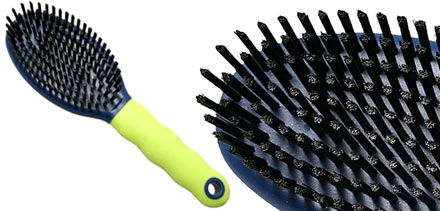
Rubber dog brushes
This type of dog brush is one of my personal favourites. I think these are also referred to as Curry brushes, but don't quote me on that.
Silicone or rubber dog brushes can be used on most dog coat types and dogs love being brushed with them, so they are also perfect for dogs who usually run a mile when they see the hairbrush come out. When I get the rubber brush out my dogs come racing over, ready for some pampering. Rubber brushes are gentle against your dog's skin, they stimulate and massage and feel great for your dog. They are also good at catching loose fur and debris and making the coat look and feel fabulous.
Did you know you can use this type of rubbery brush wet or dry so you can use them at bath time too, to get the shampoo or product into the coat and also help relax your dog at bath time as they will enjoy the massage action of these brushes. Woof!
Detangling comb
These combs have very sharp edges so must be used with care. They are an alternative to cutting away very bad mats with scissors. Recommended for use only if you really know what you are doing.
Undercoat rake
For dog's with thick fur and an undercoat which tends to shed in clumps, an undercoat rake will get down to the issue easily, removing the loose undercoat and tangles much easier than a standard dog brush or comb.
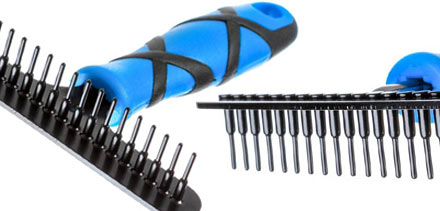
De-shedding tools for dogs
During shedding season, the best brush for shedding is a specific deshedder tool like the FURminator or similar, to penetrate the undercoat and really get the job done. I use a de-shedder tool on my own dogs and am always amazed at the amount of fur it removes that would otherwise have been slowly dropped throughout my house. I use a deshedder on my German Shepherd and also my Fox Terrier cross, so they suit most shedding coat types, not just thick coats or undercoated dogs. Most deshedding tools have a similar look and design so you don't have to buy the branded one if you don't want to.
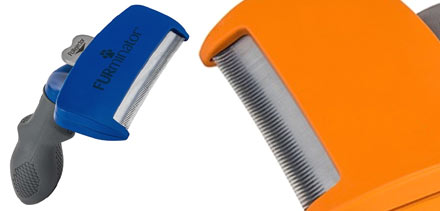
Dog combs
Combs are great for running through the dog's coat after using a slicker or pin brush, to catch any missed tangles. Dog combs are also useful for areas like the ears or fur around the face and for curly coated dogs. Choose a narrow fine toothed comb for short fur and a wider spaced comb for long or thick fur.
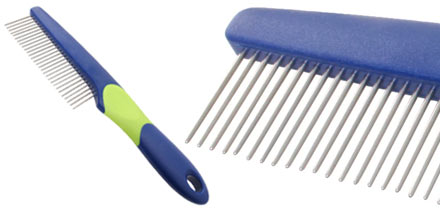
Flea combs
With a very tightly packed row of teeth, flea combs are designed to catch and remove fleas, flea dirt and even the eggs. You need to be thorough but they can be an effective, natural way to remove fleas from your dog. Don't forget though that your home's soft furnishing will still need to be treated.
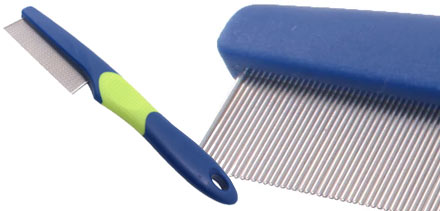
Which dog brush for which coat type?
If you prefer to look at this the other way round, let's discuss this topic from the angle of fur type and length.
Brushing short or smooth coats (e.g. Staffie, Pug)
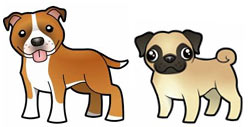
Short and smooth coats are the easiest to care for, for obvious reasons. Brushing these types of coats is more about keeping the dog's skin and coat healthy and dirt free and to deal with any shedding. Brushing a short coat once a week is fine but more often is always better.
The best dog brush for short hair is any brush that stimulates the coat and skin and can also deal with any moulting hairs. A soft or rubbery brush is what I like to use as they massage the skin, make the coat look healthy and remove debris and loose hairs. My dog's love them. It is like giving them a massage and they act like they are on a spa day, lol. Something like the KONG Zoom Groom or any similar rubbery brush is perfect for this coat type.
A standard bristle brush is also good for shorter coats, to give the coat a lovely finish and remove any loose hairs or debris. You may also need to use a shedding comb or de-shedding tool during shedding season but use these with care on short coats. Be gentle.
Brushing wire haired coats (e.g. Westie, Border Terrier)
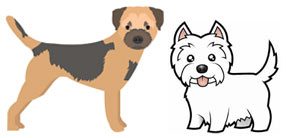
Wiry coats are not only prone to matting but are also coats that shed so should be brushed twice a week. Use a slicker brush to deal with tangles and some of the dead fur. After that, you can follow the shedding and finishing advice as above, for short coats.
Brushing curly coats (e.g. Bichon Frise, Poodle)
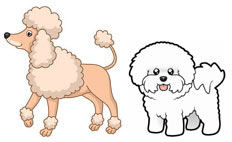
The main issue with the home grooming of curly coats is going to be mats and tangles. Your dog is going to need brushing at least every other day because the soft curls can mat easily. If you come across a mat, don't pull and tug on it as this will hurt and scare your dog. Work gently. You may also want to get a dog detangle spray to help.
Pin brushes are great for curly coats as the bristles have a protective pin on each end and the bristles of the brush are quite widely spaced.
Pay particular attention to areas that mat and tangle easily like between the legs, the tummy and the ears. Go through the coat afterwards with a medium toothed dog comb to check for any missed mats or tangles.
Brushing silky coats (e.g. Yorkie, Shih Tzu)
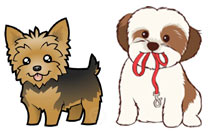
Dogs with fine or silky coats usually need to be brushed on a daily basis as they are very prone to mats and tangles. Pin brushes work great on long or fine coats but you may find a slicker brush is more effective at dealing with the removal of any dead hairs if your dog is moulting. It can also be a good idea to comb the coat through afterwards with a grooming comb to help check for any remaining knots.
Then once again, a bristle brush used in the direction of the hair growth finishes the job nicely, adding shine and health to the coat by encouraging natural oils.
Brushing double coats (e.g. German Shepherd, Border Collie)
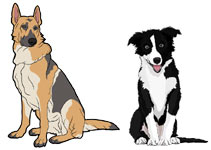
There is not one best brush for double coat dogs, as they have two types of fur and therefore two 'issues' to deal with.
Double coated dogs have a soft layer of fur underneath the coarser topcoat. These soft undercoats can mat easily and also shed twice a year in a very dramatic way. Use a slicker brush regularly to remove any mats or tangles from the undercoat and finish the topcoat with a bristle brush to remove hair and debris and give the coat a healthy shine.
For shedding you will likely need a more specialist tool rather than just a dog brush. Undercoat rakes or special deshedding tools are a great help (discussed above).
How often should I brush my dog?
We have given a rough guide above but the simple answer is as often as possible. Don't leave it for weeks and then wonder why the job is difficult and your dog hates it. Regular grooming is an important part of any dog's care. Short, gentle grooming sessions are far more beneficial and enjoyable than mammoth sessions once in a blue moon that wear everyone out. It is best to make grooming part of your regular routine with your dog, like cleaning their teeth.
I keep the dog brushes and combs in a handy cupboard in the kitchen so while I am waiting for the kettle to boil etc... and the dogs are standing around as if something amazing is about to happen, we have a little brushing session. Your dog will love the one-on-one time with you and will look and feel great afterwards.
Other dog grooming advice
With a lot of us stuck at home at this time and the groomers shut, you may have a hairy overgrown dog situation on your hands. But never fear, in this second article we discuss basic dog coat care through to home grooming plus bottom, nail and ear care. Visit How to Groom your Dog at Home.
So that is it... I think we have everything covered. I hope you have found this useful.
Want more?
Why not check out some of our other popular dog blog and/or subscribe to our newsletter. It is packed full of useful information, shiny new things and special offers. We make it easy for you to keep up to date. Woof!
Or if you fancy a bit of doggie shopping, check out our wide range of online dog products, from great gift ideas for dogs and dog owners to quality dog harnesses, fabulous bowls and all kinds of dog accessories. We are one of the UK's leading pet supply stores so you are always in great hands at D for Dog.

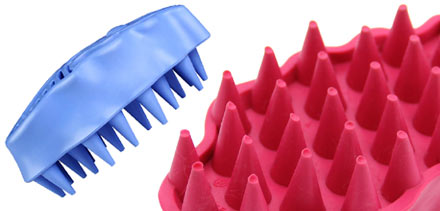
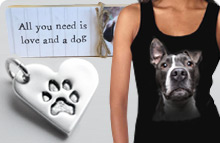
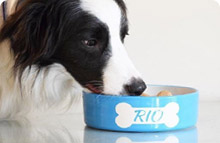
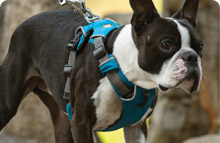
I have a long-haired German Shepherd. Which brush do you recommend?
Hi, see the section above called "Brushing double coats (e.g. German Shepherd, Border Collie)".
The author used a German Shepherd in their example. 🙄
Hello, this is a really informative article! I actually have a mix breed little girl who has really strange hair. Her hair is like a terrier on the back of her neck, part way down her back, and bottom of her back thighs. Meanwhile, the rest of her is quite short and soft. She also has random long hairs sticking out everywhere, she looks very wild! It doesn’t seem like she has an undercoat and she absolutely hates the slicker brush and even the rubber/silicone kind. She seems to be fine with the pin brush but it never does much for her coat. Do you have any recommendations?